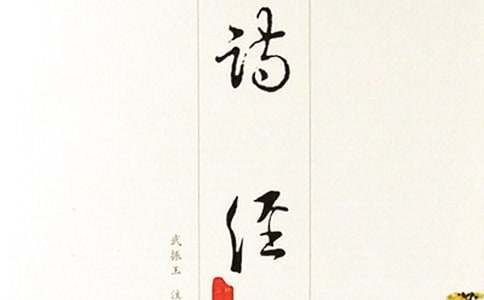一些《诗经》里的诗英译赏析
《诗经》是中国古代诗歌开端,最早的一部诗歌总集,收集了西周初年至春秋中叶(前11世纪至前6世纪)的诗歌。作为最早的一部是个总集,《诗经》的翻译版本很多,下面是小编整理的一些诗经里的诗的英译版本的赏析,欢迎阅读!

《诗·王风·采葛》
彼采葛兮。一日不见,如三月兮。
彼采萧兮。一日不见,如三秋兮。
彼采艾兮。一日不见,如三岁兮。
理译:There he is gathering the dolichos! Is like three seasons!
A day without seeing him There he is gathering the mugwort!
Is like three months! A day without seeing him
There he is gathering the oxtail-southerwood! Is like three years!
A day without seeing him
许译:One Day when I See Her Not When her I do not see,
To gather vine goes she One day seems long as seasons three.
When her I do not see, To gather herbs goes she.
One day seems longer than months three. When her I do not see,
To gather reed goes she. One day seems longer than years three.
解析:该诗用重调叠咏的手法形象生动地描写了相爱青年男女彼此思念的心情。全诗由三节组成,“一日不见”在每节重复,其他行也只改动了一个字,情感程度逐渐加深。两译本都保留了原诗的重调叠咏,但实现的方式有所不同。理雅各直译原诗的每一个词,词序没有发生任何变化,用词与结构与原诗完全一致,较为可惜的是没有像原诗一样押韵。许渊冲没有字字对译,对词序做了灵活处理,以更好地传递原诗字里行间所表露出的深层含义和情感。对于第二节咏叹部分“long as"稍作变动,全诗没有完全一致采用 “longer than".
《采薇》节选
昔我往矣,杨柳依依。今我来思,雨雪霏霏。
理译:And no one knows our sadness.
At first, when we set out,
The willows were fresh and green;
Now, when we shall be returing,
The snow will be falling in clouds.
许译:When I left here,
Willows shed tear.
I come back now,
Snow bends the bough.
解析:两种译本通过不同的诗歌形式,都保留了原诗的意义。理雅各的译本提供了大量详细注释和评论,读起来更像散文,具有很高的学术价值。而许渊冲的译本通过运用韵律,在保留原诗美学的`同时,韵脚工整,格律严格。
原诗结构一致,讲究押韵。理雅各严格遵守原诗的句子结构和顺序,但没有押韵,读起来更像是富有乐感散文。许渊冲煞费苦心来保留原诗音韵美,译文韵律格式采用:AABBCC,每行四个音节,双行押韵,且语言力求简短。
《国风·召南·野有死麕》
野有死麕,白茅包之。有女怀春,吉士诱之。
林有朴樕,野有死鹿。白茅纯束,有女如玉。
舒而脱脱兮,无感我帨兮,无使尨也吠。
理译:In the wild there is a dead antelope, And it is bound round with the white grass.
And it is wrapped up with the white grass. There is a young lady like a gem.
There is a young lady with thoughts natural to the spring, [She says], Slowly, gently, gently;
And a fine gentleman would lead her astray. Do not move my handkerchief;
In the forest there are th scrubby oaks; Do not make my dog bark.
In the wild there is a dead deer,
许译:An antelope is killed He sees the white-drest maid
And wrapped in white afield. As beautiful as jade.
A maid for love does long, “O soft and slow, weetheart,
Tempted by a hunter strong. Don't tear my sash apart!"
He cuts down trees amain The jadelike maid says,"Hark!
And kills a deer again. Do not let the dog bark.
解析:从译文可以看出理译和许译对主题的理解十分不同。理雅各在注解中解释说该诗告诉我们”一位贞洁的年轻女子如何抵御玩弄女性的骗子的引诱。”理雅各认为诗中的女子拒绝了男子的引诱,因此是个贞洁之人。而许渊冲持不同观点,译者认为诗中前段“猎人猎杀一头鹿,用白茅包好,作为礼物送给女子”便表明两者认识,女子并未拒接男子。
由于两位译者的翻译目的不同,译者自身的经历,时代环境等等诸多因素都大相径庭,所以采取的翻译方法也各不相同。两种译文各有所长,对于《诗经》翻译都有很高的借鉴意义和研究价值。
【一些《诗经》里的诗英译赏析】相关文章:
英译散文儿时的赏析11-01
散文雾的英译赏析11-01
老舍《养花》英译赏析04-15
朱自清背影英译赏析03-26
散文野草英译赏析11-02
散文巷英译赏析11-02
散文古城英译赏析10-31
英译散文赏析蟋蟀10-31
英译散文赏析《书房》10-31